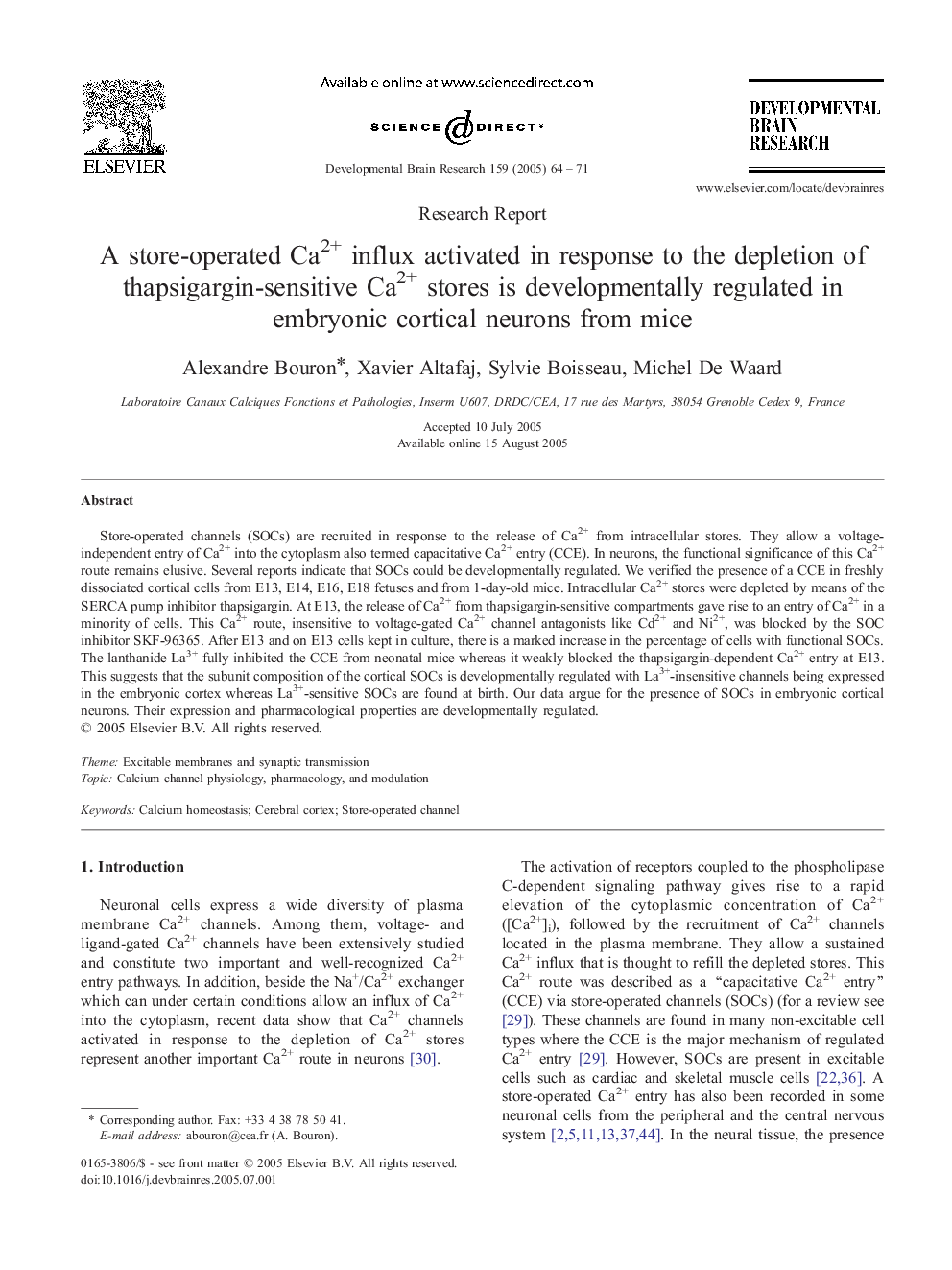| Article ID | Journal | Published Year | Pages | File Type |
|---|---|---|---|---|
| 9414641 | Developmental Brain Research | 2005 | 8 Pages |
Abstract
Store-operated channels (SOCs) are recruited in response to the release of Ca2+ from intracellular stores. They allow a voltage-independent entry of Ca2+ into the cytoplasm also termed capacitative Ca2+ entry (CCE). In neurons, the functional significance of this Ca2+ route remains elusive. Several reports indicate that SOCs could be developmentally regulated. We verified the presence of a CCE in freshly dissociated cortical cells from E13, E14, E16, E18 fetuses and from 1-day-old mice. Intracellular Ca2+ stores were depleted by means of the SERCA pump inhibitor thapsigargin. At E13, the release of Ca2+ from thapsigargin-sensitive compartments gave rise to an entry of Ca2+ in a minority of cells. This Ca2+ route, insensitive to voltage-gated Ca2+ channel antagonists like Cd2+ and Ni2+, was blocked by the SOC inhibitor SKF-96365. After E13 and on E13 cells kept in culture, there is a marked increase in the percentage of cells with functional SOCs. The lanthanide La3+ fully inhibited the CCE from neonatal mice whereas it weakly blocked the thapsigargin-dependent Ca2+ entry at E13. This suggests that the subunit composition of the cortical SOCs is developmentally regulated with La3+-insensitive channels being expressed in the embryonic cortex whereas La3+-sensitive SOCs are found at birth. Our data argue for the presence of SOCs in embryonic cortical neurons. Their expression and pharmacological properties are developmentally regulated.
Keywords
Related Topics
Life Sciences
Neuroscience
Developmental Neuroscience
Authors
Alexandre Bouron, Xavier Altafaj, Sylvie Boisseau, Michel De Waard,
